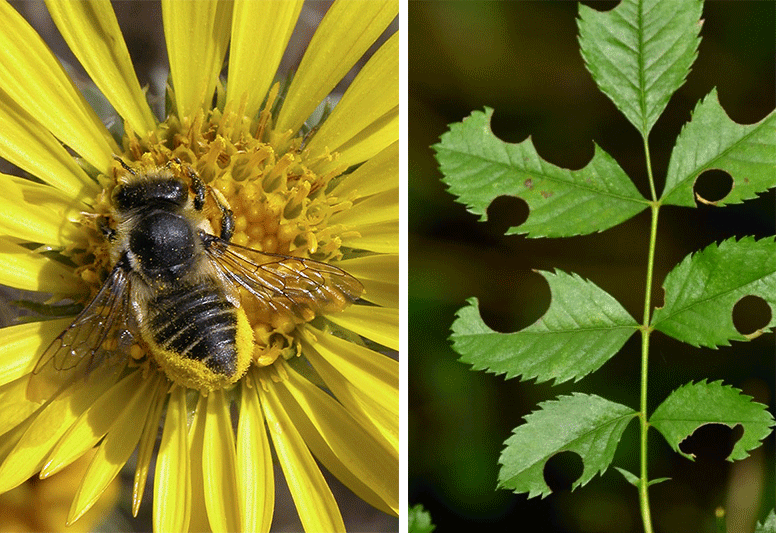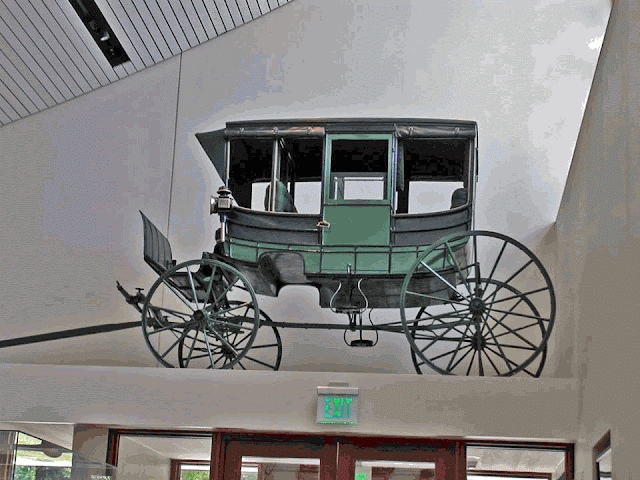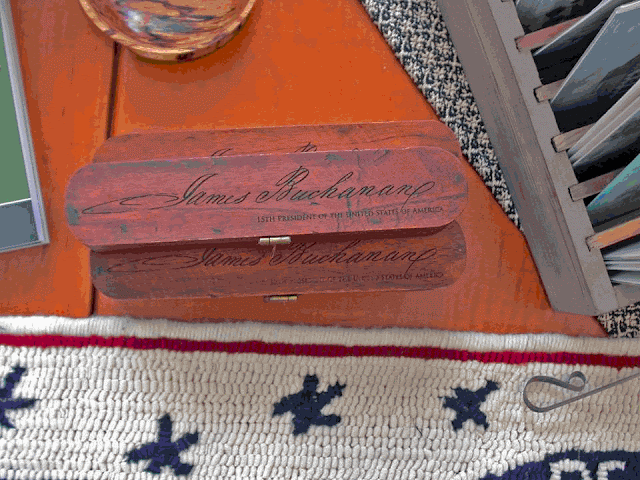It seems that spring has finally arrived in central Maryland. So, I ventured out this past weekend to see what was blooming in the northwestern part of Patuxent River State Park in northern Montgomery County. Here is some of what I saw. It was a very pleasant day and I felt reinvigorated.
 |
| Yellow trout lily (Erythronium americanum) (Liliaceae: Lily Family) Native. Commonly encountered in relatively moist woodland soils, frequently near streams. They can occur in dense aggregations, where most plants are simply small green leaves that don't ever seem to send up flowers. There is also a species with a white flower, Erythronium albidium, but I have yet to encounter this one. The name "trout" lily is said to come from the splotchy color pattern on the leaves that resembles the color of some trout. OK...whatever. |
--------------------------------------------------------------
Bellworts (Uvularia)
There are five species of bellworts in the world, all of which occur in the eastern and southern United States. Four species occur in Maryland, and the two pictured here are the ones most likely to be encountered in the central part of the state. They belong to the family Colchicaceae (Meadow Saffron Family), which is closely related to the Liliaceae. The family has a nearly world-wide distribution but Uvularia is the only genus native to the U.S.
 |
| Sessile-leaved bellwort (Uvularia sessilifolia) Native. The species gets its name from its "sessile" leaves, meaning the leaves arise directly from the stem rather than by a stalk (petiole). Two specimens from Patuxent River State Park (4/28/18) |
 |
| Perfoliate bellwort (Uvularia perfoliata) Native. In this species, the stem passes through the leaf. Specimen from Rachel Carson Conservation Park (4/29/17) |
Not bellworts, but in the same family...
 |
| Colchicum sp. Non-native ornamental, not invasive. There are several species and varieties of meadow saffron that are used as ornamental plants. Most of these bloom in the autumn, but some bloom in the spring and are called "crocuses". However, these are neither true crocuses nor true saffron. Anyway, I saw a lawn full of these in Damascus, MD last year and stopped to take some pictures with my first (and so far only) smart phone. These were only the second and third photos I had taken using the phone (virtually all of the photos on this blog are taken with a phone). The people driving by kept slowing down to see what I was doing and the people behind them would honk at them to get moving again. I guess a guy taking pictures of flowers in a lawn can be a big deal in a small town. |
--------------------------------------------------------------
 |
| Small woodland evergreen plants. Left: Downy rattlesnake plantain (Goodyera pubescens) (Orchidaceae: Orchid Family). Native. A native orchid characterized by a low cluster of dark green leaves with distinctive reticulated pattern of veins. We will have to wait until June to see the long stalk terminating in an elongate cluster of compact white flowers. Right: Spotted wintergreen (Chimaphila maculata) (Ericaceae: Heath Family) Native. Tapering dark green leaves with sparsely toothed margins and a broad white midvein with small white lateral veins. This specimen has a stalked seed capsule from last year. Patuxent River State Park (4/28/18) |
--------------------------------------------------------------
Every garden has its serpent
Eastern garter snake (Thamnophis sirtalis) (Family Colubridae). Native. Patuxent River State Park (4/28/18)
--------------------------------------------------------------
Narrow toothwort (Cardamine angustata) (Family Brassicaceae: Mustard Family) Native. There are several species of toothworts in Maryland, and several other congeners called "bittercresses." Flowers each with four pink to white petals clustering near the end of long, erect stem. There are two kinds of leaves: broad basal leaves, each with three deeply lobed leaflets, and smaller, thin leaves higher on the stem. Specimens like those on the left were found growing on a dry woodland slope, and specimens like those on the right were growing in a less-wooded flood plain. Patuxent River State Park (4/28/18).
--------------------------------------------------------------
 |
| Yellow Corydalis or yellow fumewort (Corydalis flavula) (Family Papaveraceae: Poppy Family) Native. I found large stands of this interesting plant on wooded slopes in Patuxent River State Park. To me, the leaves look like those of parsley. The yellow flowers are tiny, but the four petals have a complicated arrangement that kind of resemble jewelweed (touch-me-nots). But these are just superficial similarities. They are annuals and must germinate very early in the season to reach maturity so quickly. (4/28/18) |
|
|
WARNING!
Yellow corydalis is a lovely and harmless native plant. However, a close East Asian relative, the incised fumewort (Corydalis incisa), is an emerging invasive species. Its leaves are similar to those of yellow corydalis but the flowers are more tubular and purplish, not yellow. Its invasive potential was revealed by the discovery of 39 populations in the Bronx River Preservation Area in New York, but it has since been reported in several widely separated locations, including Montgomery County, Maryland. It has the potential to spread throughout the eastern U.S. For more information about this plant, see this Weed Risk Assessment from the Maryland Department of Agriculture.
--------------------------------------------------------------
 |
| Clubmosses (Division Lycopodiophyta, Family Lycopodiaceae). The clubmosses diverged very early in the evolution of land plants and still have the look of a "moss" about them. There are about 13 species in Maryland, with two of the most common depicted here. Left: Flat-branched tree clubmoss (Dendrolycopodium obscurum). Native. Right: Southern ground cedar (Diphasiastrum digitatum). Native. Forest floor, Patuxent River State Park (4/28/18) | |
--------------------------------------------------------------
Left: Dwarf ginseng (Panax trifolium) (Araliaceae: Ginseng Family). Native. A small, common relative of the larger and much rarer American ginseng (Panax quinquefolius). American ginseng is increasingly rare due to habitat degradation and overharvesting for the Asian market. Right: Virginia spring beauty (Claytonia virginica) (Montiaceae) Native. This is one of the most common of the spring wild flowers in our area. It was in bloom everywhere in Patuxent River State Park last weekend. The blooms are highly variable in color, ranging from white to pink, with or without pink radiating stripes. Each flower usually has five petals, but the one shown above has seven.


















































